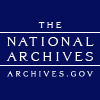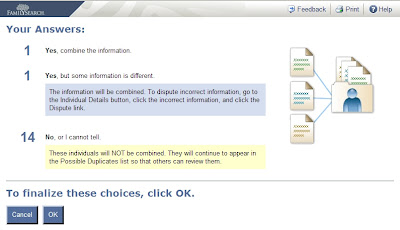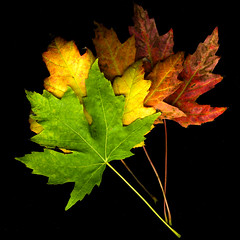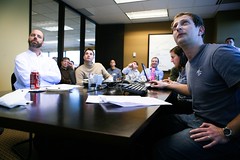 The National Archives and Records Administration (NARA) and the Genealogical Society of Utah, doing business as FamilySearch, announced the completion of an agreement this past week. In general, I'm supportive of this type of agreement and this one in particular. While I don't know that Ancestry has such an agreement in place, I know that they've published between 150 and 200 NARA record collections and are working on more.
The National Archives and Records Administration (NARA) and the Genealogical Society of Utah, doing business as FamilySearch, announced the completion of an agreement this past week. In general, I'm supportive of this type of agreement and this one in particular. While I don't know that Ancestry has such an agreement in place, I know that they've published between 150 and 200 NARA record collections and are working on more.
However, when I read the draft agreement, clause 3.3 gave me heartburn.
3.3 GSU hereby assigns to NARA all copyright that GSU does or may own in and to the Digitized Images by virtue of having created digital copies of original documents in the public domain. ... GSU will own all copyright and other intellectual property rights to the Digitized Materials (the Digitized Images with the associated metadata).
I find it highly troubling that FamilySearch claims copyright in digitized images of public domain documents and if this clause made it into the final agreement, by signing the agreement NARA implicitly acknowledges that doctrine.
What About Ancestry?
Does Ancestry make the same claim? I'm neither a lawyer nor an Ancestry spokesperson. Ancestry's owner, The Generations Network, has posted its Copyright Policy and in it they claim copyright on "content ... created by us, or by third parties as work for hire, or where the copyright has been assigned to us." I hope that since the policy doesn't explicitly make claim to copyright in digitized public domain documents, that that is a reflection of the corporation's policy on the issue.
Copyright is not the only way to protect intellectual property. Discussions on Ancestry's Terms and Conditions after the Internet Biographical Collection fiasco focused solely on their copyright claims, ignoring the remainder of the terms. The Terms and Conditions is a license—a contract—wherein you are given access to content in exchange for a legal obligation not to copy it except as specified.
I might be in left field legally, but I view this analogously to a library or private institution that holds valuable publications or works of art for which the copyright period has expired. They protect the intellectual property in these public domain works by contractual agreement. You can view the works, but you can't take photographs or make photocopies.
But I digress...
NARA's Chief Public Domain Advocate
 At an FGS conference a couple of years ago I had a heated discussion with Max J. Evans, executive director of NARA's National Historical Publications and Records Commission. We were both so passionate in our positions that it was not until near the end that I realized we were both advocating the same thing. Copyrights should expire and the works pass into the public domain, and stay in the public domain.
At an FGS conference a couple of years ago I had a heated discussion with Max J. Evans, executive director of NARA's National Historical Publications and Records Commission. We were both so passionate in our positions that it was not until near the end that I realized we were both advocating the same thing. Copyrights should expire and the works pass into the public domain, and stay in the public domain.
If clause 3.3 survived into the final agreement, then it's a grand irony that Evans, who may be NARA's chief proponent for keeping public domain documents in the public domain, is leaving NARA to work for the Family and Church History Department of the Church of Jesus Christ of Latter-day Saints.
While we're on the subject of Mr. Evans, let me digress onto another subject that I hope to write about. In a 2004 Ford symposium Evans asked what archives might learn from Amazon.com. The question resonated with me since at Ancestry I tried to evangelize a community model that I call the Amazon.com model. Some managers at Ancestry get it, some don't. Wikipedia gets it. eBay gets it. FamilySearch is showing hopeful signs. Stay tuned.
The Press Release
Here is the entire text of the press release, in case you missed it.
Press Release October 23, 2007National Archives and the Genealogical Society of Utah (GSU) Announce Digitizing Partnership
Washington, DC
Archivist of the United States Allen Weinstein and Wayne Metcalfe, vice president of the Genealogical Society of Utah, today announced a five-year partnership agreement to digitize case files of approved pension applications of widows of Civil War Union soldiers from the National Archives. GSU has many years of experience microfilming historical records at the National Archives and throughout the world and in recent years has moved to providing digital capture and publishing services. Digitization makes possible unprecedented access to the unique historic documents in the custody of the National Archives.
This partnership will begin with a pilot project to digitize, index, and make available the first 3,150 of the pension files. Upon successful completion of the pilot, GSU, doing business as FamilySearch, in conjunction with Footnote.com, intends to digitize and index all 1,280,000 Civil War and later widows’ files in the series. These records, of great interest to genealogists and others, are currently available only at the National Archives Building in Washington, DC. The widows’ pension application files, a rich source of information about ordinary American citizens of the time, include supporting documents such as affidavits, depositions of witnesses, marriage certificates, birth records, death certificates, and pages from family bibles.
“For a number of years we have had a very productive relationship with FamilySearch,” said Professor Allen Weinstein. “This agreement expands our relationship to enable online access to some of the most popular and voluminous records in our holdings. It is an exciting step forward for our institutions and for the American people,” he added.
“There is an unbelievable treasure trove of genealogical information housed in the records of the National Archives; the vast majority of which genealogy enthusiasts have never seen,” said Wayne Metcalfe. “The growing digital collection and indices that will stem from this relationship will be a priceless resource for countless family historians and researchers.”
FamilySearch will make the digitized materials available for free through www.FamilySearch.org and in 4500 family history centers worldwide, or on a subscription-based web site operated by a third party, subject to National Archives approval. They will also be available at no charge in National Archives’ research rooms in Washington, DC, and regional facilities across the country. In addition, FamilySearch will donate to the National Archives a copy of all the digital images and the associated indexes and other metadata that they create.
This agreement is one of a series of agreements that the National Archives has reached or will reach with partners to digitize portions of its holdings.
# # #
For Press information, contact the National Archives Public Affairs staff at 202-357-5300.













